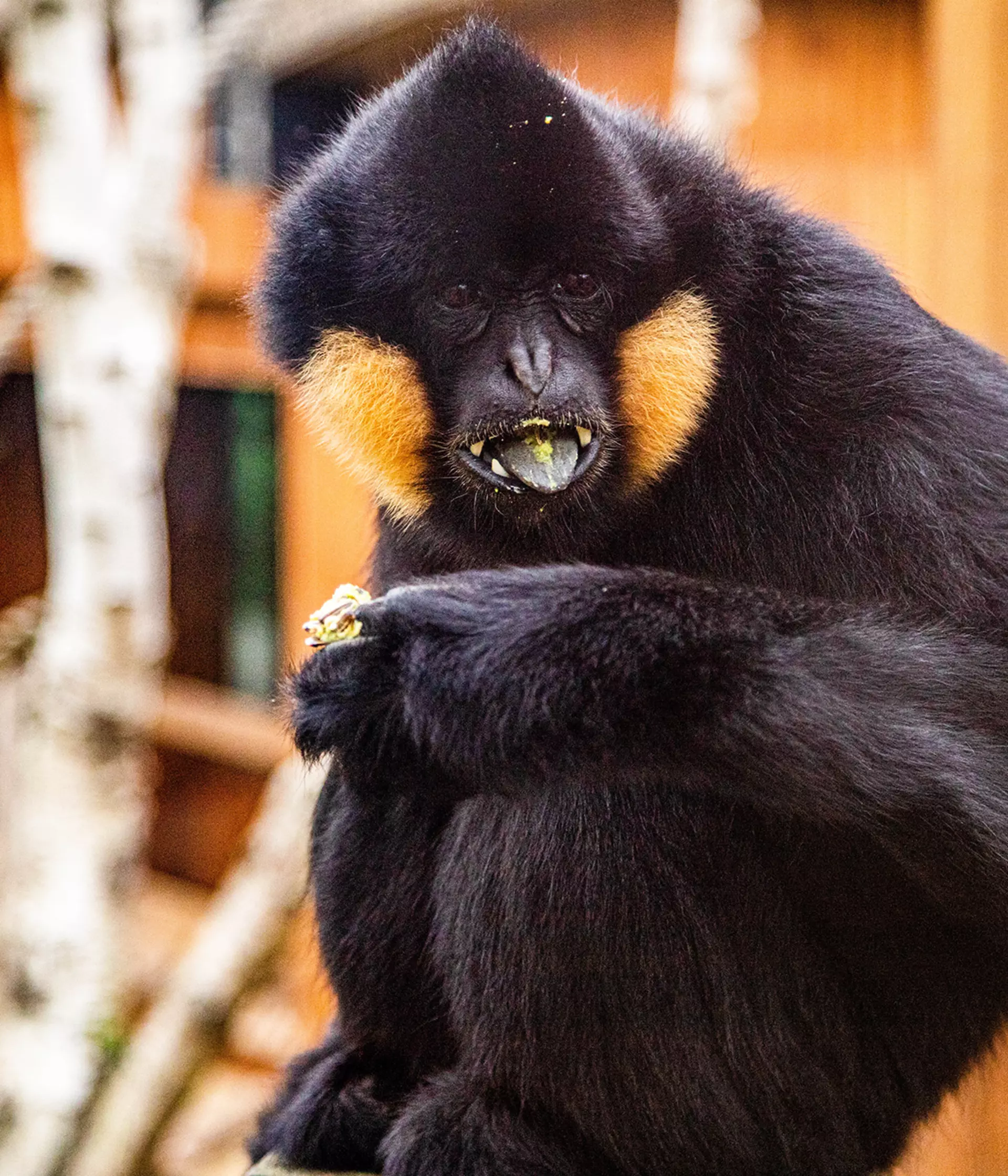What do northern white-cheeked gibbons look like?
Northern white-cheeked gibbons are a sexually dimorphic species, meaning that males and females have different coat colourings. While males have black hair all over their bodies with the exception of their distinct white cheeks, females are reddish/grey in colour, with dark brown/black hair fur on the crown of their head and back of the neck. One of the most distinctive features of the northern white-cheeked gibbon is their long arms, up to 1.4 times as long as the legs, enabling them to swing through tree canopies with ease.
Northern white-cheeked gibbon facts
Gibbons spend their lives swinging through the treetops, eating fruit and singing songs. Gibbons are the most agile of all the apes, using a special form of fast swinging called brachiation. When we humans swing on monkey bars we brachiate too, but not quite as speedy.
For gibbons living high up in the trees requires some daring leaps between branches. They are excellent jumpers and some gibbons can leap up to 10m (32feet) without a run up - that’s the length of two cars!
They live in small family groups which usually include a pair of adults, who mate for life, and their offspring. The family will defend their territory, and each morning the adult gibbons sing songs to warn rivals to stay out of their area and to reaffirm the pair-bond between them. Our northern white-cheeked gibbons can be heard across singing across Regents park early every morning.
What do northern white-cheeked gibbons eat?
Mostly fruit, with some leaves and insects.
Our iconic Snowdon Aviary has been transformed into a walk-through exhibit that soars an incredible 80ft above the London skyline. Transporting visitors to the lush mountainous forest of Central Africa, against the backdrop of a 30ft waterfall and peaceful lagoon, experience our troop of gravity-defying colobus monkeys leaping, swinging, and snoozing, in their tree-top inspired habitat.
Where do northern white cheeked gibbons live?
Vietnam and Laos. Laos is the main stronghold for the remaining population, but hunting for the pet trade and traditional medicine is an ongoing problem. They range previously included parts of China, where the species are sadly now extinct.
Northern white-cheeked gibbon threats
Deforestation for farming and timber production is reducing their habitat. In their stronghold in Laos, 60% of their forests may be lost in the next two years which is within just two gibbon generations. These gibbons are also poached for food and traditional medicines, while their babies are sold into the illegal wildlife trade to be which we are fighting against across Asia in ZSL. At ZSL, we are fighting to save the Hainan gibbon, which is the most endangered ape and very similar to the northern white-cheeked gibbon.
Gibbons at London Zoo
Our treetop gibbon habitat is home to duo father and son Jimmy and Yoda, you can watch our pair swing across trees and ropes. Come to face-to-face with our pair through floor to ceiling windows offer a view across the gibbons' elevated world.
While taking people on a voyage of discovery about the close connection between humans and small apes, highlight our gibbon conservation work in China, where our scientists are working to safeguard the world's rarest ape, the Hainan gibbon.
